Are you considering limestone for your garden edging? This durable, environmentally friendly stone enhances gardens with its natural beauty. Available in organic or cut shapes and various sizes and colors, it allows for customization to fit any garden style.
In this article, we will discuss some of the different variations of limestone that can be used as garden edging.
We will also talk about the pros and cons of limestone and walk you through the steps to install limestone edging in your garden. Finally, we will give you some photo inspiration for your own limestone garden edging project!
Contents
Flat River Limestone
This garden edging concept makes use of small limestone pebbles that have been naturally smoothed by the water of a river.
Flat river limestone is a great addition to any garden due to its unique texture. If you have any spaces in your garden that need to be filled or lined, try using flat river limestone.
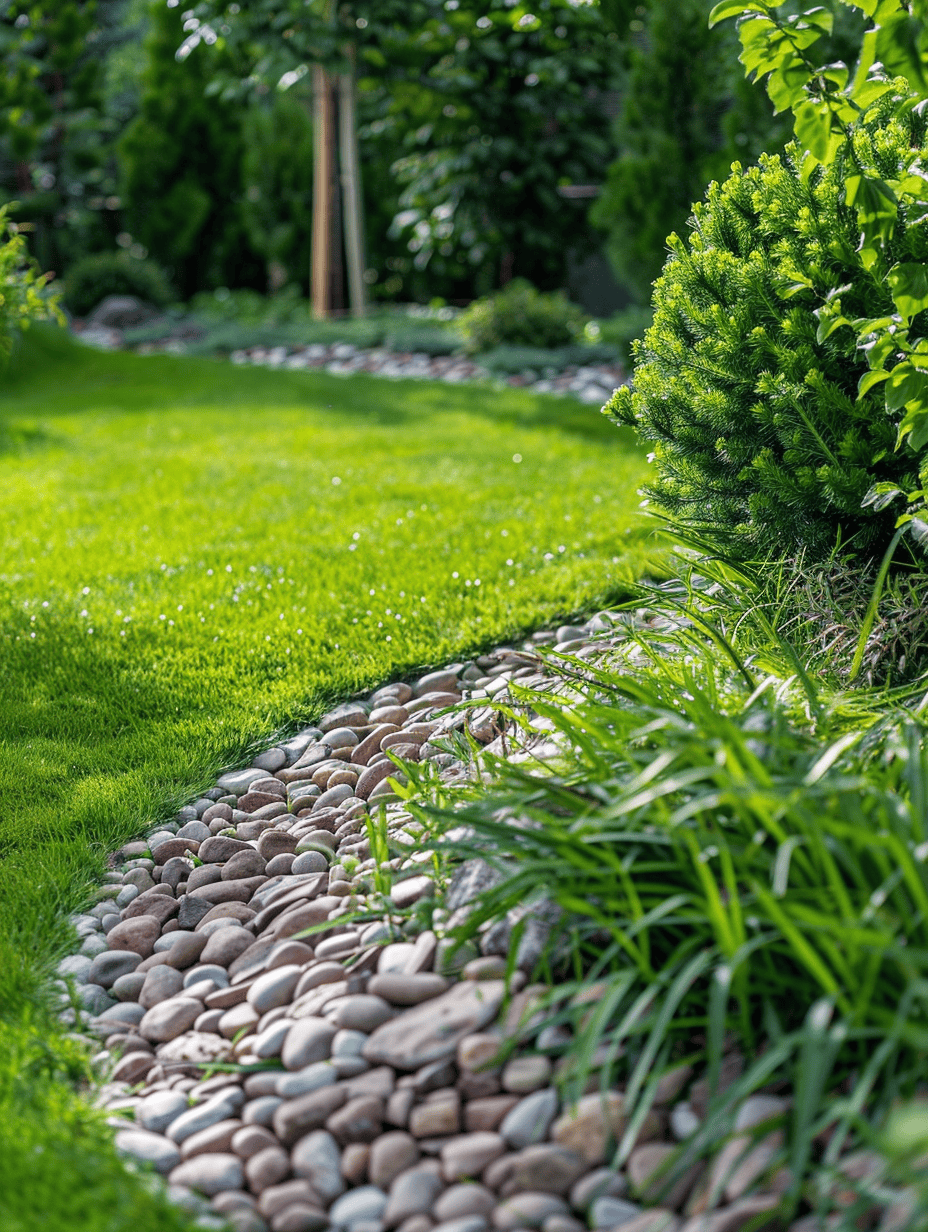
This concept showcases the aesthetic appeal of river rock as a garden edger. It clearly delineates the flower bed from the surrounding yard with a unique textured aesthetic.
River Rock
This product contains an assortment of smooth river rock for your garden edging! Consider purchasing it today to help you fulfill your garden dreams.
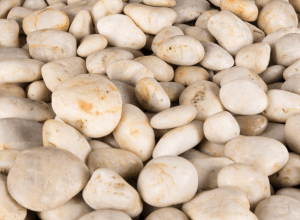
Click here to see more from Home Depot.
Round Stones
Limestone can be formed into smooth, round stones. While these stones are not as round as river limestone, they are certainly less blocky than their paver counterparts.
This variation of limestone has a more natural appearance. It is often used to edge smaller areas, like the space around small trees.
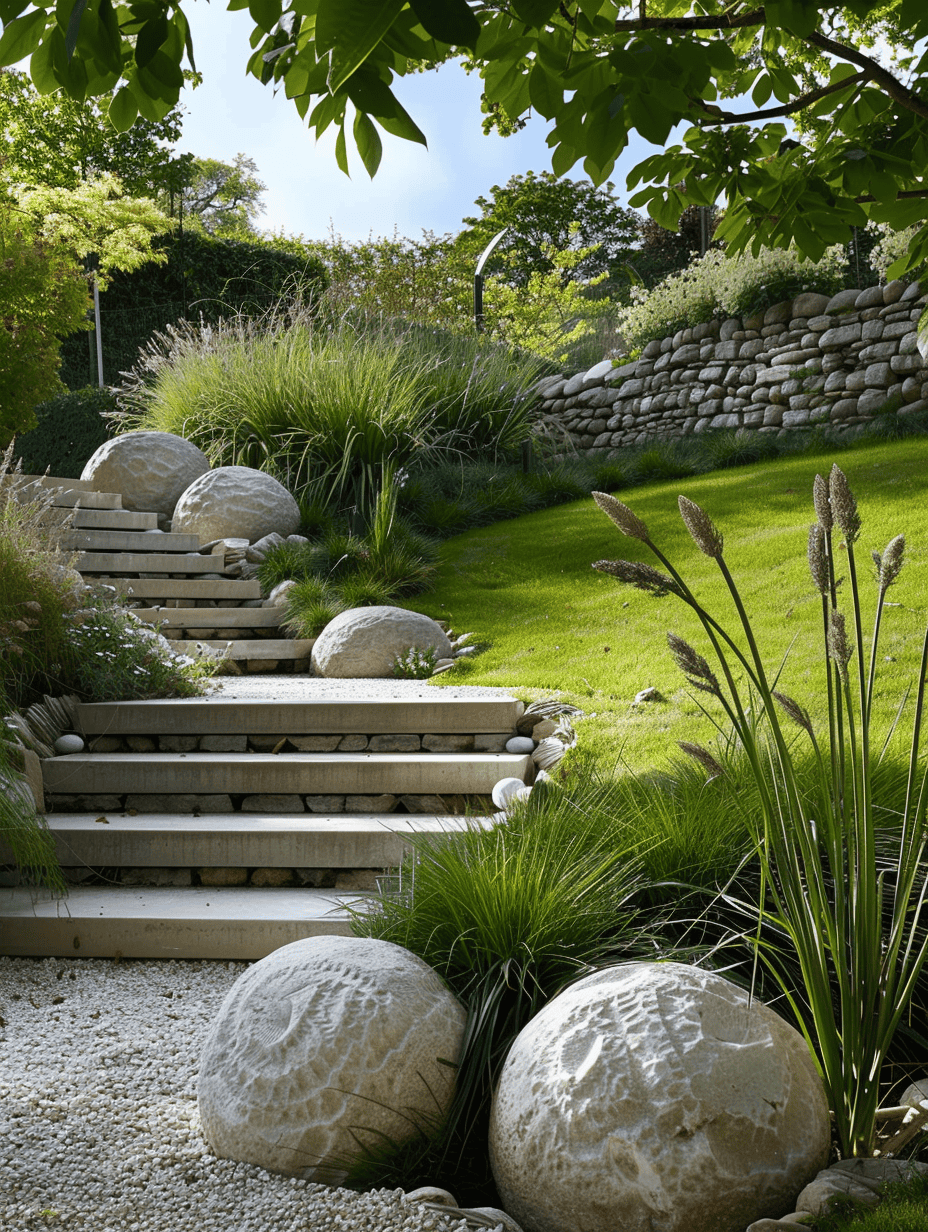
The edges of this garden walkway are lined with rounded limestone. As you can see, this variation of limestone is a great accent to the landscape. It's also a great way to ensure that everything stays in place.
Landscaping Limestone
This product includes a mixture of limestone and sandstone landscaping stones. You can create the desired look with an assortment such as this one.
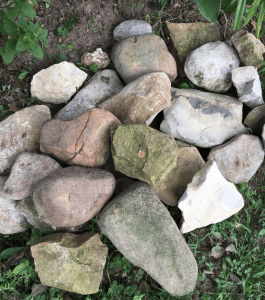
Click here to see more on Etsy.
Pavers
Limestone is often used as paving stones. These large flat stones are a great way to create a thick border between your planters or flower beds and the rest of your garden.
You can use these stones on top of raised planters as the edger or create a limestone pathway in your garden.
This product is versatile, and you can do what you want with it. You can create contemporary, modern, cottage, or nearly any other style of garden aesthetics using limestone.
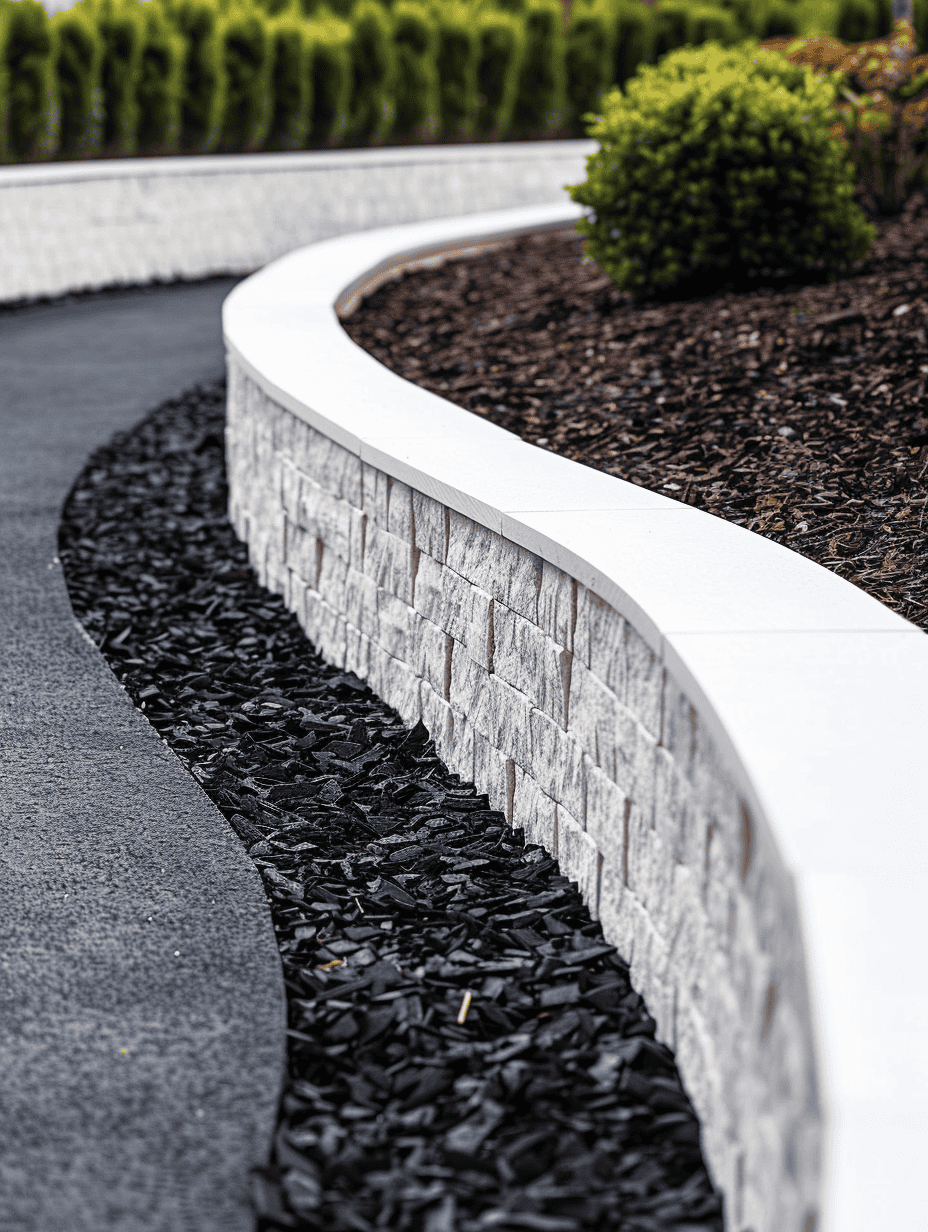
In this garden, limestone pavers top the stone wall for a more firm edge and aesthetic appeal. The flat edge serves perfectly.
Limestone Pave Stone
This paving stone is perfect for creating retaining walls or stacked planters.
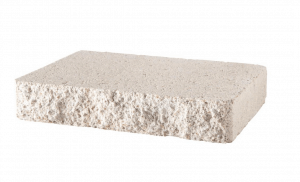
Click here to see more on Home Depot.
Limestone Curb
One of the ways that limestone can be incorporated as edging in your garden is as a curb.
Since limestone is not processed like concrete, a clean, smooth curb is not attainable. However, limestone blocks can be arranged in a way that resembles a traditional curb with a little bit more visual appeal and character.
You can build your very own limestone curb as a DIY project. This way, you'll be able to achieve the exact look that you've been wanting to create with your limestone.

These rectangular limestone blocks make an improvised curb when arranged end to end. The blocks can also be stacked on top of each other to the desired curb height.
Since each piece is separate, you're able to create subtle curves with it if you'd like.
Limestone Edging Stone
This is a basic limestone block that can be used to create curb edging in your garden. Get creative with your style.
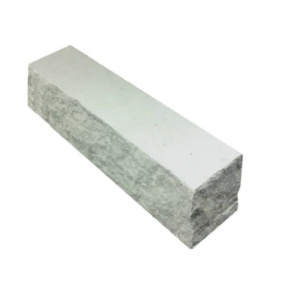
Click here to see more from Lowe's.
Pros and Cons of Using Limestone Edging
Limestone has a lot going for it as a garden edging material.
First and foremost, limestone is strong and durable. Regardless of how you choose to implement limestone edging, you can rest assured that it will last for a very long time.
Using limestone for garden edging ensures durability against temperature extremes and environmental conditions, outlasting other edging materials.
Another good thing about using limestone in your garden is that lime is frequently used to increase soil's pH level, making it less acidic and more alkaline.
If limestone is just going to be used as an edger, you can rest easy knowing that your edging material will do no harm to the underlying soil and surrounding environment.
Limestone can also be painted to the color of your choice. If you want limestone without the white or pale yellow color, you are in luck!
However, painting limestone is somewhat of a process, making it less than ideal for gardeners looking for a quick edging solution that fits their color vision.
When it comes to installing limestone edging, the process is relatively straightforward. In this way, it is one of the simpler edging materials to work with.
Like virtually any other stone, limestone blocks can be fairly heavy, making it difficult for some people to work with.
If you lack the strength needed to work with limestone, you might want to look elsewhere for a garden edging material.
Overall, a compelling case can be made that limestone is one of the best choices for garden edging.
How Much Does Limestone Edging Cost?
A pallet of 120 pieces costs $690. This means that each individual stone costs just under $6.
While this does not sound like much, consider the number of pieces needed for your project; a simple walkway or flower bed edge might not be expensive, but if you want to build an elevated planter out of limestone, the project might cost you a pretty penny.
To better understand of how much a limestone edging project will cost, measure the area you want to edge to figure out how many blocks you will need.
Then, crunch the numbers to determine just how much the project will cost.
With that said, it is important to reiterate one very important detail, and that is that limestone lasts a very long time.
The initial cost of a limestone edging project might be quite high, but you will save money in the long run because you will not have to continue getting new edging to replace cheaper, less sturdy materials.
From a long-term perspective, limestone is actually one of the more economical choices for garden edging.
How Do You Install Limestone Edging?
- Before you begin, you will need a pick, an edge tool or flat spade, a hand trowel, a small block of wood, a hammer or rubber mallet, a few wooden stakes, twine, and a garden hoe.
- Begin by defining the border between the flower bed or walkway and the rest of the yard or garden using an edge tool or a flat spade.
- Use a pick to loosen the dirt along the perimeter of the flower bed.
- Use a hand trowel to remove the loose dirt, creating a small trench between the flower bed and the yard.
- Use a small block of wood and a hammer to tamp down the surface of the trench. This will ensure a level surface for the next step of the installation process.
- Use a hammer or mallet to drive several wooden stakes along the trench, spacing them about six to ten feet apart.
- Place an edge stone at two adjacent wooden stakes.
- Tie a length of twine to one stake, run it to the adjacent stake, and tie it off.
- Set the remaining stones into place along the trench, using a mallet to tap them in place. Tap each stone until they are flush with each other and even with the twine.
- Then, use a garden hoe to backfill dirt against the back of the new stone perimeter. Use a tamper or your foot to compress the soil against the back of the stone. If there are any gaps along the front of the stones between the stones and the grass, backfill and tamp them as well.
Inspiration
Now that we have gone over some of the specifics about incorporating limestone edging in your garden, check out some photos that will inspire you to use limestone to transform the aesthetic of your garden!
Golf Course Yard
Limestone edging will help maintain clean, crisp lines if you have a yard with artificial turf. As you can see, limestone is an excellent complement to vibrant greens. It also serves as an excellent retaining wall.
Side Garden Bed Edge
Limestone is an excellent choice for edging your side garden alongside your house.
Limestone goes great with small, multicolored rocks and pebbles. Allow it to loop around your house, creating a solid, continuous edge that makes your flower bed pop.
Backyard Entertaining
This kind of limestone edging goes great with this outdoor living setup. The soft white color of the limestone accentuates the aesthetic.
All Natural Appeal
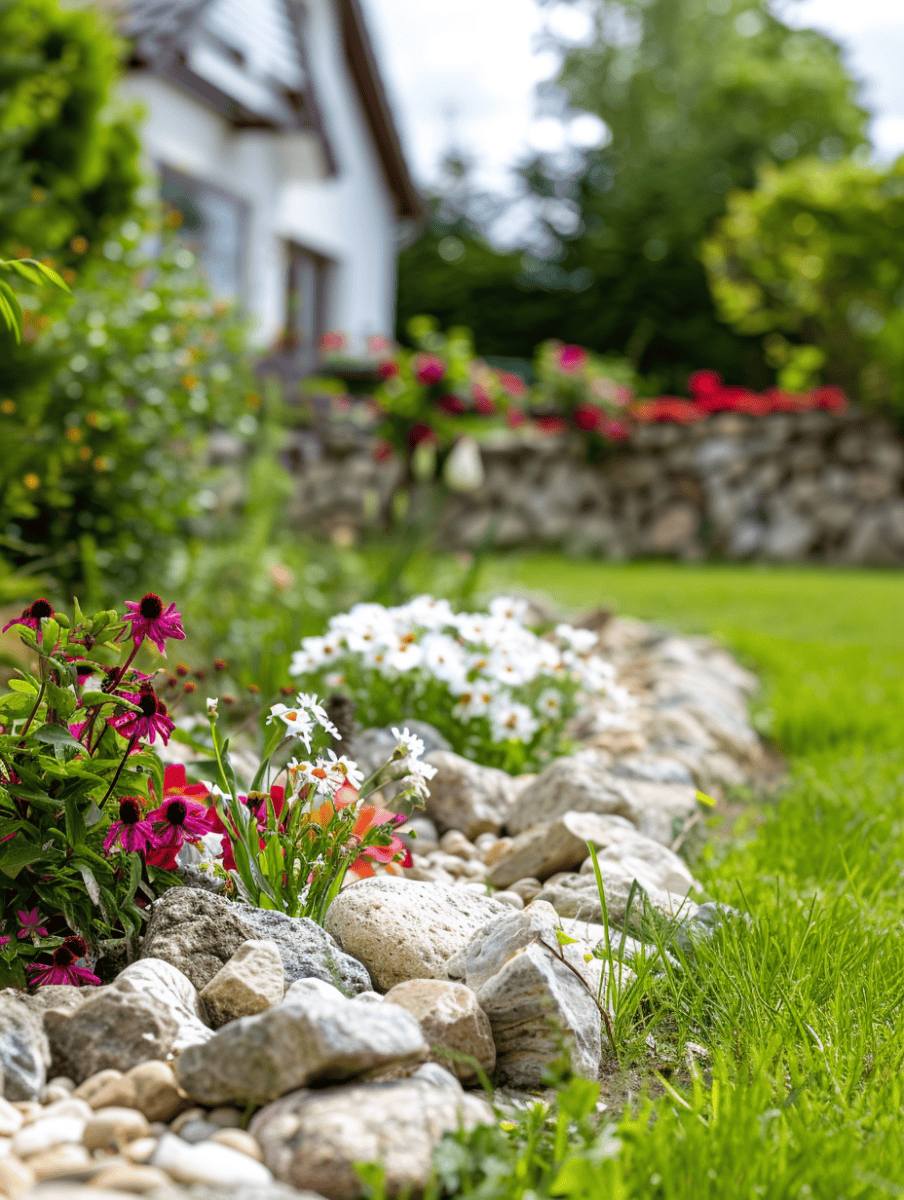
Check out how the natural rocks spark interest in this space. It creates a nice barrier between the yard and your flower bed, and it is also perfect for when the rain comes.
The rain will be able to wash through and flow over the rocks without damaging your garden.
Raised Planter
Stacked layers of limestone are ideal for a raised planter setup. The strength of the limestone easily contains and supports the soil and mulch of large planters like this one.
A planter like this one brings the plants closer to eye level so they can be better admired.
Vibrant Green Complement
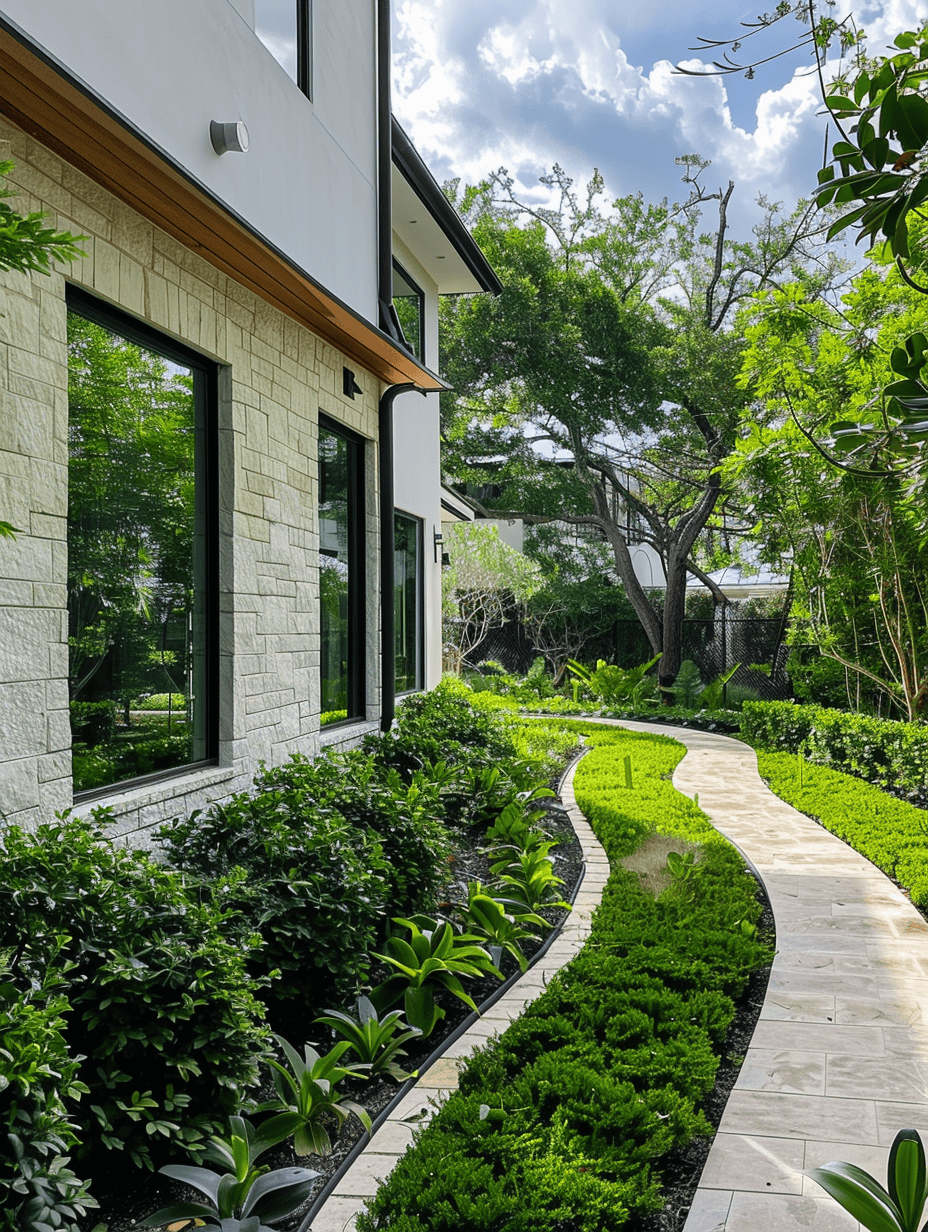
Sometimes, a thin limestone border is enough to break up a vibrant green landscape, providing more visual intrigue and appeal. Consider using this style in your garden today.
Natural Border Look

In this garden, limestone is used to delineate and contain all of the small plants that surround the base of the tree.
The limestone separates the green plants and colorful flowers from the green grass without being the dominant feature of the landscape.
Hard Flower Bed Border

Tall rectangular limestone blocks are great for providing a hard border around flower beds. They also allow you to build up your flower beds to make them the emphasis of the yard or garden.
Rugged Flower Bed Border
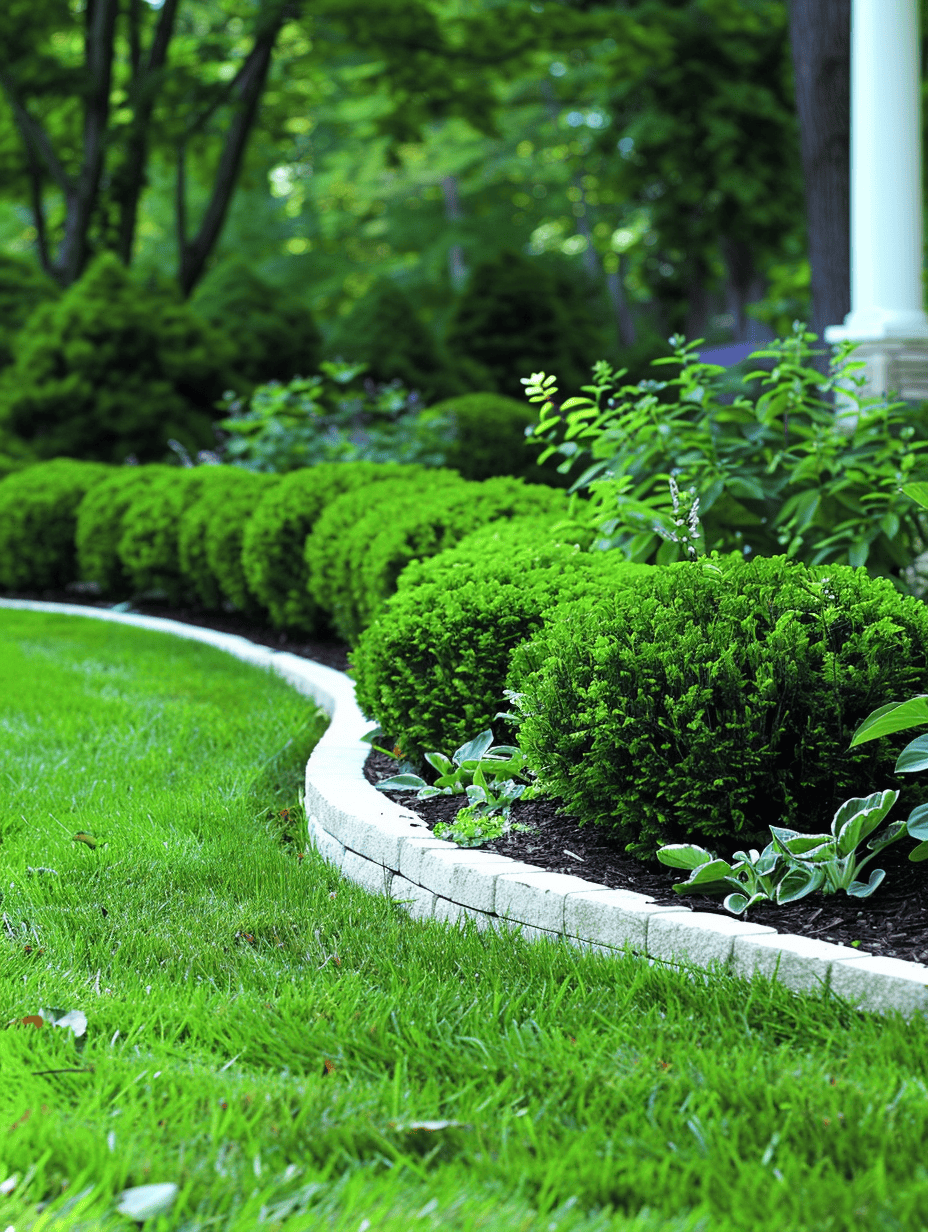
Some limestone blocks are more jagged and rugged. These kinds of blocks are a great way to edge your flower beds if you want to retain a more natural look. This is an attractive way to use limestone without being overpowering.
In Closing
Limestone presents an excellent option for garden edging, offering durability, versatility, and aesthetic appeal.
Whether you're aiming for clean lines, natural appeal, or raised planters, limestone can elevate the look of your garden while standing the test of time.
![Limestone Garden Edging [Tips, How-To and Pictures]](https://gardentabs.com/wp-content/uploads/2019/11/limestone-gardening-edging-pin.jpg)
